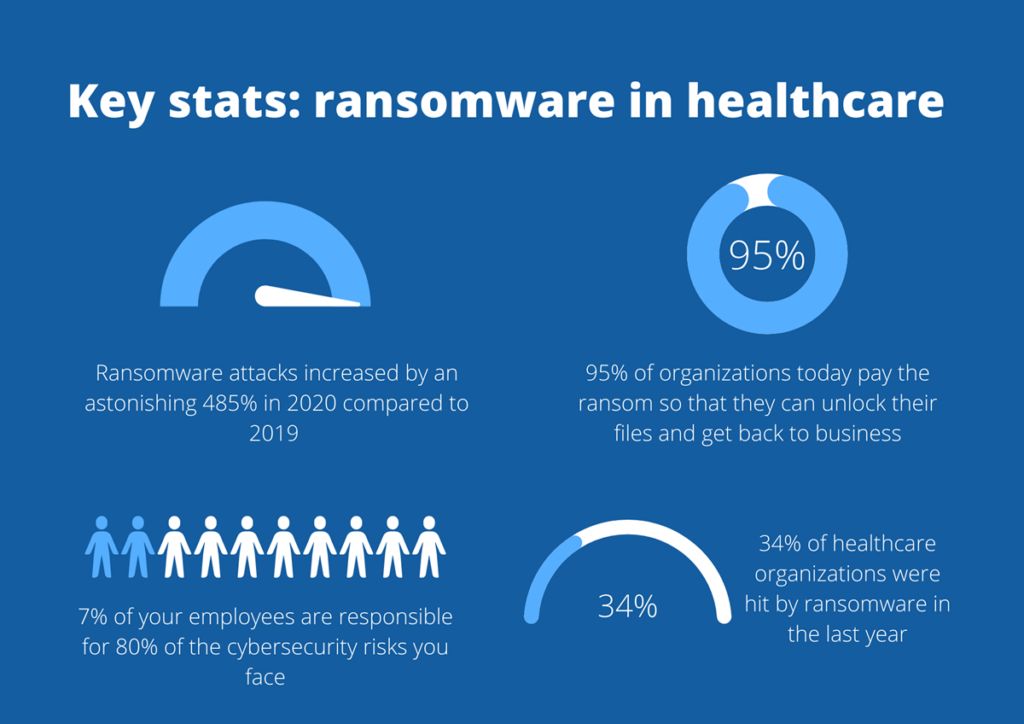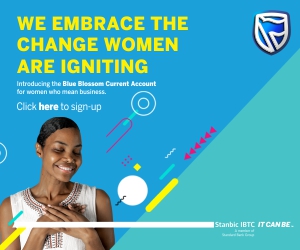Health
SPECIAL FEATURE: Enter the new HIV test kit – OraQuick


BY: Sandra Ani
In this article, GrassRoots.ng looked at the simplicity and confidentiality of the new test kit for the Human Immunodeficiency Virus – OraQuick.
The numbers
The Human Immunodeficiency Virus is one of the widespread diseases that have resulted in high mortality rate in the world. Since discovery in 1983, about 75m people have been infected globally, with about 32m deaths, according to the World Health Organisation reports.
As at the end of 2018, 21 per cent of the world’s population did not know their status and about 37.9m people were recorded to be living with HIV globally. Of these, 36.2m were adults, while 1.7m were children.
A global epidemic
HIV has become one of the most challenging public health issues in the world. The burden and scope of the ‘global epidemic’ varies considerably according to regions and countries, but WHO reports that a larger percentage of infected people are found in Africa, with nearly one in every 25 adults (3.9 per cent) living with HIV and accounting for more than two-thirds of the people living with HIV worldwide. However, reports show that a vast majority of HIV patients are located in low and middle income countries with an estimated 68 per cent living in Sub-Saharan Africa.
The Joint United Nations Programme on HIV/AIDS reports that about 1.9m people are living with HIV in Nigeria. Sadly, Nigeria happens to be the second country in the world to record the highest number of the epidemic. As at 2019, results from UNAIDS showed that Nigeria had a 1.4 per cent HIV prevalence, which is considerably an improvement when compared to the previous estimate of 2.8 per cent.
Mortality dims
Speaking in Abuja last year, Nigeria’s President Muhammadu Buhari noted that fewer people were living with the virus in the country, indicating that Africa’s most populous country made significant progress in the fight against the spread of HIV.
“For the first time, the end of Acquired Immune Deficiency Syndrome as a public health threat by 2030 is truly in sight for our country. I urge us all not to relent but to increase the momentum. Let us work collectively and push for the last mile,” he said.
In the last couple of years, a lot of energy has been channeled into creating awareness about HIV; people are encouraged to go for tests, so their status could be determined much earlier and for Anti-Retro viral Therapy to begin, where applicable. Organisations, local and international, have established free test centers in every country to facilitate early detection.
Stigma
The ART protects infected people from illness and prevents further transmission of the disease to others. Early diagnosis of HIV should be combined with improved prevention, treatment and care. Sadly, people who test positive to the virus always face stigma in their immediate communities, hence the reluctance to disclose their status. Even after diagnosis, some patients would prefer to ignore the reality of their ill-health. Rather than go to the hospital for treatment, they would prefer to live with the illness, knowing well that if people around them got to know, their relationship with them might be affected.
The commitment of international organisations, country-specific government, non-governmental organisations and other health bodies to prevent new HIV infections and ensure that infected patients get access to treatment is visible. Provisions have been made for test centers where people can check their status at relatively no cost. A lot of awareness programmes have been organised, targeting every segment of the population to educate them about the disease, to avoid stigmatisation.
Treatment
HIV drugs are also made relatively affordable to encourage early treatment and reduce mortality rate. However, before treatment can commence, screening is essential first step to take. HIV screening is therefore a gateway to prevention, treatment, care and support services. With the prevalence of the HIV and the efforts being made to curb the spread as well as treat infected patients, greater percentage of the Nigerian population are still ignorant of their status. Efforts are still being geared towards the availability of recommended test centres and counselling sites.
However, a significant milestone has just been reached. Nigeria’s Ministry of Health, through the National AIDS and STDs Control Programme, confirmed the efficiency of a new HIV self-test kit for use in Nigeria after recognising its ability to identify and detect HIV antibodies with a 98.4 per cent specificity and sensitivity.
The kit
NASCP was instituted to complement efforts by the ministry of health towards the fight against HIV and AIDS.
Organiser of NASCP, Dr. Godwin Emmanuel, in a statement on Tuesday, November 19, gave a reporton the OraQuick HIV self-test launch.
According to him, the new HIV self-test kit known as OraQuick is certified by WHO, the United States Food and Drug Administration and Nigeria’s National Agency for Food and Drug Administration and Control. He noted that the kit was being used in over 50 countries.
His words, “As part of measures to promote HIV self-testing by the ministry, OraQuick HIV self-test kit was recently evaluated by the Federal Ministry of Health across the six geopolitical zones in Nigeria. This is in line with national guidelines to assess the efficacy of the test kits for use in Nigeria. The evaluation showed 98.4 per cent specificity and sensitivity to detect HIV antibodies I and II among Nigerians.
“This, therefore, affirms greater confidentiality and privacy from individuals who will purchase the easy-to-use, pocket-friendly diagnostic kit from a designated outlet. The self-run test can be done in the privacy of one’s home or other desired locations, without the knowledge of anyone.”
The 95-95-95 goal
Emmanuel agreed that a lot of people living with HIV in Nigeria were not aware of their status and that the country still had a long way to go as regards meeting the recommended number of HIV testing centres and counselling sites needed. He added that the HIV self-test had been identified as one that would contribute to the attainment of the UNAIDS global 95-95-95 goals. This implies that 95 per cent of people living with HIV should know their status, 95 per cent of people who know their status should access treatment, and 95 per cent of people on treatment should achieve suppressed viral loads.
The OraQuick self-test kit affords people the confidentiality needed to carry out the test, especially if they are anxious about going to a hospital or a public test centres.
Simple procedure
For the test, no blood is required. One only needs to put saliva on the palette and in a matter of minutes, the person’s status becomes visible. The result of the test is guaranteed, as it is being used in other countries in the world. It is relatively easy and simple to use and has been designed to be affordable to everyone regardless of social class.
OraQuick self-test kit is undoubtedly a welcome development and a tell-tale of the efforts to combat the HIV epidemic.
Health
Cybercriminals Successfully Encrypted Data in Ransomware Attacks on Nearly 75% of Healthcare Organizations, Sophos Survey
Only 24% of Healthcare Organizations Were Able to Disrupt a Ransomware Attack Before Attackers Encrypted Their Data. This is the Lowest Rate of Disruption in 3 Years, reports SANDRA ANI


Sophos, a global leader in innovating and delivering cybersecurity as a service, today shared its sector survey report, “The State of Ransomware in Healthcare 2023,” which revealed that, among those organizations surveyed, cybercriminals successfully encrypted data in nearly 75% of ransomware attacks.
This is the highest rate of encryption in the past three years and a significant increase from the 61% of healthcare organizations that reported having their data encrypted last year.
In addition, only 24% of healthcare organizations were able to disrupt a ransomware attack before the attackers encrypted their data—down from 34% in 2022; this is the lowest rate of disruption reported by the sector over the past three years.
“To me, the percentage of organizations that successfully stop an attack before encryption is a strong indicator of security maturity. For the healthcare sector, however, this number is quite low—only 24%. What’s more, this number is declining, which suggests the sector is actively losing ground against cyberattackers and is increasingly unable to detect and stop an attack in progress.
“Part of the problem is that ransomware attacks continue to grow in sophistication, and the attackers are speeding up their attack timelines. In the latest Active Adversary Report for Tech Leaders, we found that the median time from the start of a ransomware attack to detection was only five days. We also found that 90% of ransomware attacks took place after regular business hours. The ransomware threat has simply become too complex for most companies to go at it alone. All organizations, especially those in healthcare, need to modernize their defensive approach to cybercrime, moving from being solely preventative to actively monitoring and investigating alerts 24/7 and securing outside help in the form of services like managed detection and response (MDR),” said Chester Wisniewski, director, field CTO, Sophos.


Additional key findings from the report include:
- In 37% of ransomware attacks where data was successfully encrypted, data was also stolen, suggesting a rise in the “double dip” method
- Healthcare organizations are now taking longer to recover, with 47% recovering in a week, compared to 54% last year
- The overall number of ransomware attacks against healthcare organizations surveyed declined from 66% in 2022 to 60% this year
- Compromised credentials were the number one root cause of ransomware attacks against healthcare organizations, followed by exploits
- The number of healthcare organizations surveyed that paid ransom payments declined from 61% last year to 42% this year. This is lower than the cross-sector average of 46%
“In 2016, the Red Cross Hospital of Córdoba in Spain suffered a ransomware attack that reached servers and encrypted hundreds of files, medical records and other important patient information. It was a major disruption to our operations and interfered with our ability to care for our patients. The stakes are high in ransomware attacks against healthcare organizations—and attackers know that—meaning we’ll always be a target. After this ransomware attack, we worked hard with Tekpyme to bolster our defenses, and now we have reduced our incident response time by 80%. I think the industry as a whole is making improvements, but there is still work to do, because of the constantly changing nature of cybercrime. Hopefully healthcare organizations can leverage the help that is available from security vendors such as Sophos to prevent a very real ‘threat to life’ if systems go offline due to a ransomware attack,” said José Antonio Alcaraz Pérez, head of information systems and communications at Cruz Red Andalusia in Spain.
“Cyberspace today is ripe with technically sophisticated actors looking for vulnerabilities to exploit. What all this translates to is a multidimensional cyberthreat of actors who have the tools to paralyze entire hospitals. Partnering with the private sector is critical to our mission. The information [they] share has real-world impacts and can save real businesses and real lives,” said Christopher Wray, FBI Director.
Sophos recommends the following best practices to help defend against ransomware and other cyberattacks:
- Strengthen defensive shields with:
- Security tools that defend against the most common attack vectors, including endpoint protection with strong anti-ransomware and anti-exploit capabilities
- Zero Trust Network Access (ZTNA) to thwart the abuse of compromised credentials
- Adaptive technologies that respond automatically to attacks, disrupting adversaries and buying defenders time to respond
- 24/7 threat detection, investigation and response, whether delivered in-house or by a specialized Managed Detection and Response (MDR) provider
- Optimize attack preparation, including regularly backing up, practicing recovering data from backups and maintaining an up-to-date incident response plan
- Maintain security hygiene, including timely patching and regularly reviewing security tool configurations
To learn more about the State of Ransomware in Healthcare 2023, download the full report from Sophos.com.
*The State of Ransomware 2023 survey polled 3,000 IT/cybersecurity leaders in organizations with between 100 and 5,000 employees, including 233 from the healthcare sector, across 14 countries in the Americas, EMEA and Asia Pacific.
Health
LUTH Doctor Slumps And Dies After 72hrs Call In The Neurosurgery Unit


Outrage As LUTH Doctor Dies After 72-hour Non-stop Shift
Tweeps have taken to X to share their thoughts on the death of a young doctor, identified as Dr. Umoh Michael, who died on Sunday after allegedly working 72 hours straight.
According to reports, Michael died during a church service at the United Evangelical Church on September 17. He was said to have worked a 72-hour non-stop shift at the Lagos University Teaching Hospital, Idi-Araba, where he was a resident doctor.
Doctors under the aegis of the Association of Resident Doctors, LUTH chapter, in a letter addressed to the Chief Medical Director, LUTH, Prof. Wasiu Lanre Adeyemo, attested to the fact that the young doctor was overworked.
They claimed Michael returned home at about 3:00 a.m. Sunday after a 72-hour shift in the hospital, adding that he had barely slept in their apartment before that day.
The statement partly read, “We the house officers are in deep grief over the loss of our colleague, a co-house officer (Dr Umoh Michael) who died on 17th September, 2023, after having a 72hrs call in the Neurosurgery Unit.
“He is said to have been on call 72hrs before arriving home on Sunday morning to get set for church service, reaching his worship center (United Evangelical Church) where he slumped in the church at about 11 am.”
“His roommate attested to the fact that Umoh Michael had barely slept in their apartment over the past one week as he was always on call or the day he returned home was around 3 a.m. after surgeries and other activities in the Neurosurgery Unit.”
Reacting to the sad incident, LUTH’s Public Relations Officer, Omolola Fakeye, who spoke on an online platform (not PUNCH) Online said, “It is not true that anybody worked for 72 hours. I have not been briefed about his death.
“We were at a programme yesterday (Monday), but I will find out; I can’t say anything now. I will check the medical report of what could have happened because anybody can say anything, but the medical report will show us what happened.”
May his soul rest in peace.
Health
Why You Need To Drink More Water Than You Use To


Hello! It’s the weekend, And as usual, We want to share some quick important healthy living tips with you.
Today, We will be sharing on the IMPORTANCE OF DRINKING ENOUGH WATER.
Do you know that Adult humans are 60 percent water, and our blood is 90 percent water? Now, There isn’t an agreed quantity of water that must be consumed daily. You only need to drink as plenty as you should.
Water can be said to be one of the highest natural medicines to man, As it helps avoid a lot of sicknesses like kidney stones, And it also helps in their healing process.
Here are a few importance of drinking enough water;
1. It boosts skin health and beauty: With dehydration, the skin can become more vulnerable to skin disorders and premature wrinkling.
2. It cushions the brain, spinal cord, and other sensitive tissues: Dehydration can affect brain structure and function. It is also involved in the production of hormones and neurotransmitters. Prolonged dehydration can lead to problems with thinking and reasoning.
3. It regulates body temperature: Water that is stored in the middle layers of the skin comes to the skin’s surface as sweat when the body heats up. As it evaporates, it cools the body. In sport.
4. The digestive system depends on it: The bowel needs water to work properly. Dehydration can lead to digestive problems, constipation, and an overly acidic stomach. This increases the risk of heartburn and stomach ulcers.
5. Adequate water flushes body waste easily: For sweating and removal of urine and feces.
6. The airways need it: When dehydrated, Airways are restricted by the body in an effort to minimize water loss. This can make asthma and allergies worse.
7. It helps maintain body blood pressure.
8. It prevents kidney damage: The kidneys regulate fluid in the body. Insufficient water can lead to kidney stones and other problems.
9. Consuming enough water instead of sweetened drinks helps with weight loss.
10. Joint Lubrication: Cartilage, found in joints and the disks of the spine, contains around 80% water. Dehydration can reduce the joints’ shock-absorbing ability, leading to joint pain.
Please drink enough water!
-



 Tech4 days ago
Tech4 days agoAnambra School Emerges Winner In National Girls In ICT Competition With Groundbreaking VR Technology
-



 News4 days ago
News4 days agoNiger State Prisoners Run From Facility After Rainstorm Brings Down Part Of Fencing
-



 Politics4 days ago
Politics4 days agoEnugu State Government Flag Off Palliative Distribution In The State
-



 Spotlight4 days ago
Spotlight4 days agoNigerian Woman Breaks Guinness World Record With 55-Hour Interview Marathon
-





 News3 days ago
News3 days agoEFCC: New Documents Extracted Shows Yahaya Bello Allegedly Paid School Fees To The Tune Of $845,852,84 For His Family Members
-



 News2 days ago
News2 days agoKing Charles Reportedly “Really Unwell” And Funeral Plans Are Currently Being Reviewed
-





 Finance2 days ago
Finance2 days agoAISA Has Refunded The Fees Paid By Yahaya Bello To EFCC
-



 Entertainment2 days ago
Entertainment2 days agoBig Congratulations To BBNaija Star, Miracle Igbokwe Who Graduated With Distinction From Embry-Riddle Aeronautical University In Florida USA








